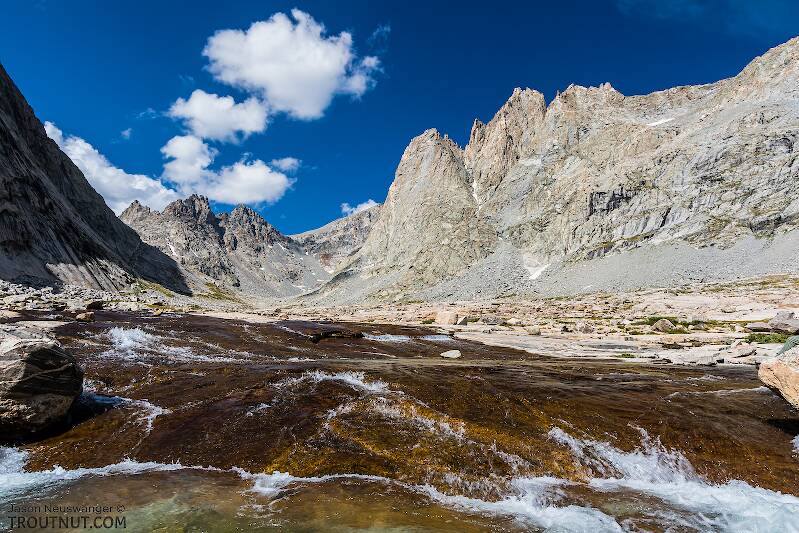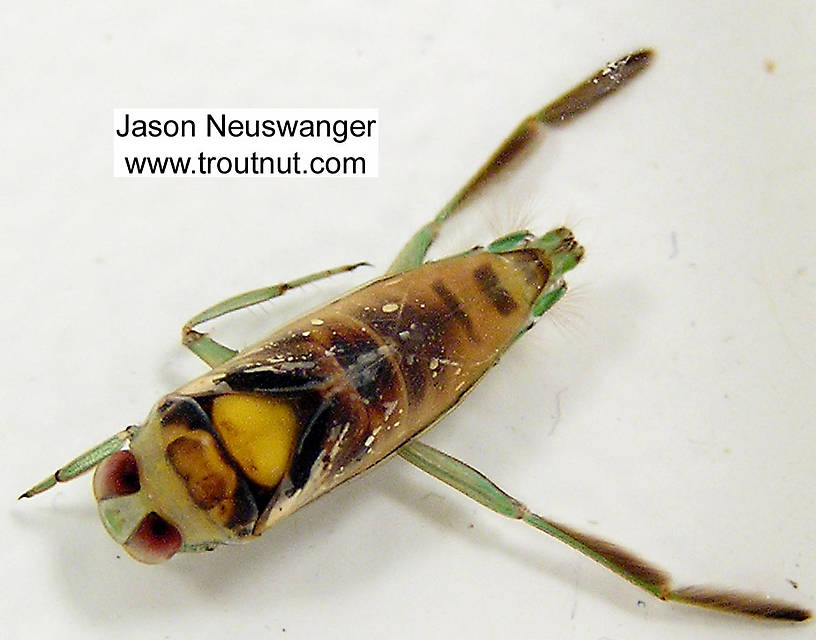
Hex Mayflies
Hexagenia limbata
The famous nocturnal Hex hatch of the Midwest (and a few other lucky locations) stirs to the surface mythically large brown trout that only touch streamers for the rest of the year.
Featured on the forum

Troutnut is a project started in 2003 by salmonid ecologist Jason "Troutnut" Neuswanger to help anglers and
fly tyers unabashedly embrace the entomological side of the sport. Learn more about Troutnut or
support the project for an enhanced experience here.
Backswimmers
Like most common names,"Backswimmer" can refer to more than one taxon. They're previewed below, along with 1 specimen. For more detail click through to the scientific names.
True Bug Family Notonectidae
These are pretty much always called Backswimmers.
Backswimmers are often important to trout, especially in ponds. They're one of the insects which usually doesn't factor into a fly angler's decisions at all, but it pays to be aware of them because in just-so situations the trout eat nothing else.
Be careful handling them--they have a painful bite.
Be careful handling them--they have a painful bite.
See 1 more specimen...
Backswimmer Species Notonecta indica
These are very rarely called Backswimmers.



